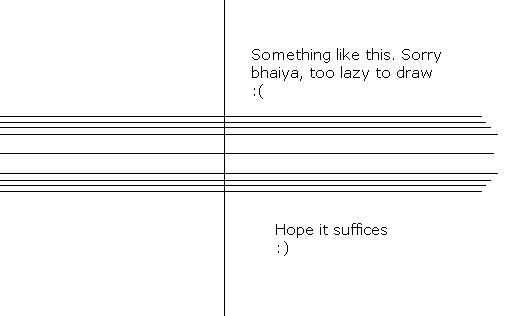 11
11x2+y2=x2-y2+I
2y2=I
y2= I [4]
**************************edit**************************
x2+y2=x2-y2+I
2y2= a ; a belongs to set of integers
y2= b ; b still belongs to the set of integers [4]
hope the confusion is cleared.
i used I bcos it is the symbol commonly used to denote an integer [4]
 1357
1357awesome...
but what is the graph? ;)
 11
11x values don't matter. y values are sq roots of integers...........like √2, √3, et cetera.
As we go up the y axis, the number of such values between two integers increases............for eg. √2and √3 lie between 1 and 2. √5, √6, √7 and √8 lie between 2 and 3 and sq roots of all integers from 9 to 15 lie b/w 3 and 4.............
HOPE U UNDERSTAND [4]
 11
11First I is diff from second I [3][4]
Anyways, both are integers [4]
Btw, why no pink for my graph? [3]
 3
3machan let the first I be 1 and then the second I will be 1/2 not an integer da. but i think ur second I shows the no is an integer
 11
11OK machans.........no need to get confused.........I'll edit it for you. [4]
 3
3machan i think dat ur graph is rong becos u didnt include the graph when I=0 da
 3
3machan a/2 will not always be an integer da
 11
11That's why the graph will be only for specific values of RHS
And a small clarification: y=0 is included in the graph [4]
 1
1what if y =1/√2
2y2 = I
but y2 is not integer
that is the doubt i have
please clear this ani..
 11
11Ok ppl. pls ignore the step
2y2=I
and then see if it makes sense [1]
 21
21THE TOPOGRAFY OF DA GRAF REMAINS UNCHANGED BUT DA VALUEAS U MUST IDEALLY PLOT WILL CHANG....
THE CREDIT 4 CORE LOGIC GOES 2 U ANI...
JUS A SLIGHT CHANGE(MAYB)
SAMPLE VALUES OF WILL BCUM :
√(1/2) , √(2/2) , √(3/2) ETC......
AND NOT √2and √3, √5, √6, √7 and √8
 11
11yeah........tapan got ur point........basic shape is same.........but Rhs changes.......thanx for the correction [4]
 1
1hahahah gud work Anirudh!!!!
